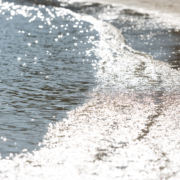 https://samahitaretreat.com/wp-content/uploads/2023/10/IMG_6469-scaled.jpg
1707
2560
Kirsten Mia
http://samahitaretreat.com/wp-content/uploads/2024/01/samahita-logo-v2.svg
Kirsten Mia2023-10-10 04:54:302024-02-15 09:17:08The Ripple Effect…
https://samahitaretreat.com/wp-content/uploads/2023/10/IMG_6469-scaled.jpg
1707
2560
Kirsten Mia
http://samahitaretreat.com/wp-content/uploads/2024/01/samahita-logo-v2.svg
Kirsten Mia2023-10-10 04:54:302024-02-15 09:17:08The Ripple Effect…How To Do Neti: the Ancient Nasal Irrigation from Hatha Yoga
A preventive and health promoting practice against pollution, virus or infection to the nasal cavity and sinus region
The current coronavirus pandemic has led to a surge in research around the nature of the virus and what happens in the respiratory tract. The practice of yoga, particularly Hatha yoga, has been focused on respiratory tract health, from the nasal cavity and sinuses right down to the lungs, for at least 1,000 years. Now a major scientific study published in the journal Cell has characterized specific ways the coronavirus that causes COVID-19 infects the cells of the nasal cavity to the greatest degree as it then continues to infect down the respiratory tract to a lesser degree (1).
The virus becomes firmly established in the nasal cavity. This means the nose is the primary site from which lung infections develop. According to these researchers it means that protective and therapeutic strategies to reduce the presence of the virus in the nose could be beneficial. Nasal irrigation is considered a possibly effective strategy.
Nasal irrigation is not a novel practice. It is noted as one of six specific cleansing practices in Hatha yoga, termed as Neti (2). The original reference to this practice is termed sutra neti, sutra being a string (today a rubber catheter) passed through the nostril and out the mouth to essentially stimulate and invigorate the nasal cavity. We show the detail of this practice in a video we made in 2010 below. Though highly beneficial jala neti, literally water neti, is most popular and easy to do.
The ancient text notes that these cleansing practices are highly respected for their value amongst yogis as they purify the body and yield wonderful results. Neti is said to not just clear the nasal passage but also the sinuses, improve vision, and either prevent or destroy diseases of the upper respiratory tract. This has been the experience anecdotally by thousands of aspiring and practicing yogis as well as evidenced on popular media shows of late. Many use as prevention against colds and allergies. However, this landmark study is one of the first credible scientific sources to offer a valid justification for the practice.
Nasal irrigation is used in the medical world, especially with children, whereby a bulb syringe loaded with saline solution is force-squeezed through the nose. Though effective it presents a force onto the highly sensitive nasal mucosa. Jala neti pours the saline solution through the nostrils one at a time in a more agreeable way to the nasal passage. As with any of these cleansing practices rushing or being careless through bad technique leads to an ineffective outcome or discomfort. We have an updated video for you here to show the steps to do this water (jala) neti as well as the detail below.
Best of all you can do at home in your bathroom or kitchen at no cost (other than salt, water and a pot).
“The ancient text notes that these cleansing practices are highly respected for their value amongst yogis as they purify the body and yield wonderful results. Neti is said to not just clear the nasal passage but also the sinuses, improve vision, and either prevent or destroy diseases of the upper respiratory tract. “
How to do Water (jala) neti
Follow along with the video and read these points:
- Prepare the following items: a. two full teaspoons of non-iodized salt (pink, rock, celtic sea – your choice) b. some boiled water and cold water c. a neti pot (looks like a mini teapot) or improvise with the edge of a plastic bottle You could be at your bathroom sink, kitchen sink (make sure it is empty), or in a spot in nature away from people use.
- Mix the salt and water: This can be done in a separate cup. I usually add one full teaspoon of salt to the hot water so it dissolves. I then add cold water so it becomes mildly warm. My improvised temperature test is to put my little finger in the water and sense it is nicely warm, not hot, nor cold. The salt test can be done by taking a sip of water from the prepared cup. If it tastes average salty then it is enough. If barely a salt taste or a very strong saltiness then adjust accordingly by either adding a little more salt or water.
TIP: no salt, very low salt, and/or cold water will sting. Never do. Hot water is obviously dangerous. However, you can vary the temperature depending on the climate and condition of your sinuses. If doing neti to help cleanse the nasal passage after having been in a polluted or dusty environment then mildly warm water is sufficient. If you are experiencing sinus mucus flow then increasing the temperature is more effective in healing. As always, be careful with the temperature.
- Fill your pot: Fill one neti pot with your set temperature water mix. If it is your first time you may like to use one full neti pot between both sides, meaning a half pot per nostril. However, most effective is one full neti pot per nostril.
- Pour water through one nostril: Place tip of neti pot against and slightly inside the edge of the nostril. If not properly placed water will flow and it will look like it is working but really water is just pouring across the tips of the nostrils. It must flow through and cross the midline and flow out the other nostril. Tilt your head sideways so your cheek is parallel to the sink and slightly tipped forward.
TIP: the angle of your head is important. If tipped back you will feel water flow down your throat and dislike the experience. If not tilted enough it will stay in the nasal cavity more and potentially enter the eustachian tube giving you a feeling of water in your ear similar to swimming.
- Nasal blow after the water for a final nasal passage and sinus clear out: Once all the water has poured through one and out the other nostril remove your hand and pot and keep your face forward over the sink. Do not touch your nose or close a nostril. Instead do a nostril blow so water is ejected out of both nostrils equally. This is important. Do a few times till you feel clear of water and fresh. Note: this is the occasion when mucus can be ejected from the nose. It is very important to do. Whatever comes out, as dust will also show, just wash down the sink.
Time:
the whole process from set up to finish is less than 5 minutes and when experienced 2 minutes
Frequency:
if mucus, infected, allergy or flu season, or living in pollution then do daily till the infection, allergy or pollution improves. For general health once a week is sufficient.
Next level:
Sutra neti with the rubber catheter is highly effective. Typically this was done first followed by water (jala) neti as a complete practice. You have both videos here to inform you.
We wish you a life of happy sinuses and nasal passages.
Dr. Paul Dallaghan’s expertise with breathwork, body and meditative practices comes from three sources: (1) three decades of daily dedicated practice and teaching these techniques; (2) uniquely acknowledged in the Yoga tradition by the title of “Master Yogi-Prānācharya (expert in breath)”, following an immersion in the original culture through one-on-one direct training in practice and study of ancient texts; (3) a PhD in doctoral scientific research at a leading US university (Emory) covering both the tradition and science of yoga and breath practices in terms of stress, health and aging. As a result, Paul occupies a unique space to impart genuine teaching and science on the breath, body, and meditative practices, seen as a Teacher-of-teachers and identified to carry on the tradition of Pranayama. His sincere and ongoing role is to teach, write and research, to help put out experienced and authentic information on these areas of how we live, breathe and be, to help people improve their mental and physical health, and live more fulfilling lives.
For more on his background see his bio
References:
- Yixuan J. Hou, … Richard C. Boucher, Ralph S. Baric. SARS-CoV-2 Reverse Genetics Reveals a Variable Infection Gradient in the Respiratory Tract. Cell, 2020; DOI: 10.1016/j.cell.2020.05.042
https://www.sciencedirect.com/science/article/pii/S0092867420306759 - Hathapradipika of Swatmarama
The 15th Century Hatha yoga text that lists Neti as one of the six cleansing practices (kriyas) in chapter 2, verse 22. Its detail and benefit is given in verses 30 and 31.






